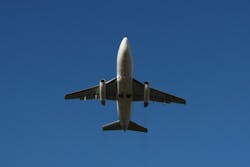TSA fights losing battle in court of public opinion
It has been a rough few weeks for several initiatives put forth by the Transportation Security Administration. Late last month, the Department of Homeland Security’s inspector general issued a report that raised doubts about the objectivity and cost-effectiveness of the agency’s behavioral detection program, also known as Screening of Passengers by Observation Techniques or SPOT. Just last week, the TSA announced that it would continue prohibiting passengers from carrying small pocket knives onto planes. TSA Administrator John Pistole had initially proposed lifting the ban in April as part of an effort to allow screeners to focus more of their attention on finding items that pose a greater threat, such as explosives. The announcement was quickly met by a deluge of criticism from lawmakers and industry groups, who felt the move would jeopardize the safety of passengers and flight crews.
The agency also has its fair share of critics among those in the security community. Billie Vincent, a former director of civil aviation security for the Federal Aviation Administration and author of the book, "Bombers, Hijackers, Body Scanners, and Jihadists," says he was a "big supporter" of Pistole’s, but that changed when the agency decided to remove all of the full-body imaging machines from airports that used backscatter technology in favor of ones that use millimeter wave. The move came after privacy advocates raised a fuss over the detailed images produced by the backscatter machines, as well as possible health concerns arising from the radiation that was emitted.
"When they did that, they empowered the privacy advocates and the so-called technical experts and disempowered themselves," says Vincent, who now serves as president and CEO of consulting firm Aerospace Services International (ASI). "In effect, they have given the argument to these adversaries, so for that reason alone they should have never given that up. The TSA rolled over and played dead on that and when they did that, I fell off of (Pistole’s) bandwagon."
Additionally, Vincent says the radiation concerns were blown completely out of proportion. "You get less radiation from one body scan on the Rapiscan (backscatter X-ray) than you get at 10 minutes at altitude in your normal jet plane. You get less radiation than you do during a normal few hours outside in the sun," says Vincent.
Vincent was also opposed to the decision to allow small knives back onto planes as he believes it defeats the entire purpose of trying to find explosive components and other things that would be considered more dangerous and that it was in direct opposition to the goal of freeing up screeners to focus on these items.
"It is much more difficult to detect the components of an IED (improvised explosive device) and when you’re in that process, you’re going to see all of the articles and you’re going to see knives because if you can see the other components, you can see knives," says Vincent. "It’s dumb if you misdirect yourself to the point where you have targeted doing something on the basis of focusing on one item and it conflicts with another. It is stupid when you then state your goal is to do that and not recognize what you’re trying to do is directly in conflict with your stated goal. The screeners still have to look at all of the knives to be able to decide whether or not it has blade less than 2.36 inches. It was really dumb to me and that’s when I fell off (Pistole’s) bandwagon further."
Despite these harsh criticisms, Vincent says most of the things the TSA is doing to ensure the safety of air travel they’re "doing well." His top two recommendations for improving airport security further would be to restrict all passengers to one, laptop-size carry-on bag and to implement the Computer-Assisted Passenger Prescreening System (CAPPS) II program. The program was initially proposed by the TSA in 2003, but was later terminated after watchdog groups raised privacy and safety concerns. "Congress injected themselves into it and said, 'you cannot do that with ethnicity, race and so on,'" says Vincent. "Race I would agree with, ethnicity I would not. Ethnicity ought to be a part of the profile to non-citizens and green card holders, but non-U.S. citizens. After all, our adversaries are radical and militant jihadists. We know where they come from and usually what countries. What we don’t know is the difficulty in applying that profile in the U.S."
In many ways, it seems the TSA is always in the midst of a Catch 22 situation. No matter what the agency comes up with to improve airport security – full-body scanners, passengers screening programs or enhanced pat-down searches – people are going to say they have either gone too far or not far enough. The one thing that everyone can agree on, however, is that airplanes remain a prime target for terrorists. Just this week, fears were raised that al-Qaida affiliated militants may have gotten their hands on surface-to air missiles after an instruction manual for the weapon was found in a building occupied by the terror group in Mali. Security experts have long expressed concerns that a shoulder-fired rocket could be used to bring down a commercial aircraft. While this threat is markedly different from the potential of an IED being slipped past airport security, the goal remains the same – to bring down an airplane and instill fear in the hearts of the flying public. That threat isn’t going away anytime soon.
About the Author
Joel Griffin
Editor-in-Chief, SecurityInfoWatch.com
Joel Griffin is the Editor-in-Chief of SecurityInfoWatch.com, a business-to-business news website published by Endeavor Business Media that covers all aspects of the physical security industry. Joel has covered the security industry since May 2008 when he first joined the site as assistant editor. Prior to SecurityInfoWatch, Joel worked as a staff reporter for two years at the Newton Citizen, a daily newspaper located in the suburban Atlanta city of Covington, Ga.

